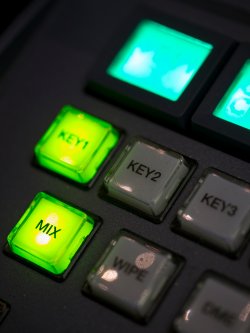Television and Digital Media (BA)
Audio/Sound Design Concentration
The BA in Television and Digital Media Program, Audio/Sound Design Concentration approaches the study of sound production as an interdisciplinary, multi-platform experience. The skill-based curriculum is designed to allow you to create compelling sound design for all forms of media as well as become proficient in audio production techniques. Coursework is complemented by hands-on work at the campus radio station as well as on various documentary, television, film, theatre and music projects. Internships at professional broadcast, post production, music and media companies are highly encouraged and strongly supported by the school.
Access to state-of-the-art equipment in the audio studios, radio station and DuMont Television Center will allow you to hone your expertise as you become skilled on audio equipment used in the industry today.
The curriculum for the BA in Television and Digital Media, Audio/Sound Design Concentration is comprised of 120 credits (3 cr. per course) and includes five areas of requirement:
- Television and Digital Media – Audio/Sound Design courses (15 credits) — sequential instruction specific to the major-concentration
- Common-Core School Curriculum(18 credits) — a broad foundation for understanding all communication and media disciplines (required of all students in the School of Communication and Media)
- Major Elective courses (15 credits) — further development of major-related expertise
- General education courses (45-48 credits) –- exploration of studies that comprise a liberal arts education – e.g. in writing, humanities, math, and the natural, social and computer sciences (required of all University students pursuing a bachelor of arts degree)
- Free electives (15-24 credits) — exploration of additional areas of interest or inclusion of a Minor
In addition, students often pursue internships to acquire practical experience related to the major.
The U.S. Bureau of Labor Statistics offers very positive data for careers in communication and media, including those in sound engineering and related professions.
Below is a sampling of career titles in the industry:
- Audio Lead
- Recording Assistant
- Sound Mix Engineer
- Recording Engineer
- Audio Programmer
- Forensic Audio Specialist
- Audio Producer
- HD Audio Applications Engineer
- Assistant Studio Manager
- Re-recording Mixer
- Sound Designer/Mixer
- Senior Audio Programmer
- Recording Studio Technician
- Senior Audio Designer
- Recording Studio Manager
- Audio Director
- Voice-over Director
- Soundtrack Engineer
Visit the links below for additional professional and career-related information:
Program Coordinator: David Sanders
